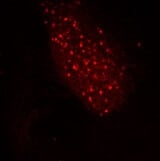A study of a new mouse model identifies a drug target that has the potential to increase social interaction in individuals with some forms of autism spectrum disorder (ASD), according to researchers in the Perelman School of Medicine at the University of Pennsylvania. The team published their work in Biological Psychiatry.
Although medications are available for treating symptoms sometimes associated with ASD, such as anxiety, depression, attention-deficit hyperactivity disorder, and irritability, there are no medications currently approved for treatment of the core social interaction deficits in ASD, and the brain basis of these social interaction symptoms are still not well understood. “This research could significantly change our understanding of the causes and brain changes in autism and could lead to new treatment approaches for the harder-to-treat social aspects of ASD,” said senior author Edward S. Brodkin, MD, an associate professor of Psychiatry and director of the Adult Autism Spectrum Program.
Behavioral symptoms in individuals with autism spectrum disorder have been attributed, in part, to aberrant connections between neurons, but the molecular underpinnings of ASD-related behavioral and brain physiology are largely unknown. Previous studies on human genetics have implicated a little-studied gene called Protocadherin 10 (PCDH10) in ASD. PCDH10 is a neural cell adhesion molecule that is involved in brain development and the maintenance of synapses, the points of connections between neurons where neurotransmitters are released. The PCDH10 protein is expressed at high levels in particular brain regions, including the amygdala, which mediates emotion and motivation and is implicated in the social deficits of ASD.
When one of the two copies of the Pcdh10 genewas deleted in mice, these animals – called Pcdh10+/- mice – showed reduced social approach behavior, which resembled the social withdrawal of humans with ASD. This effect was seen more prominently in males than in females, which is consistent with the male predominance of ASD in humans. In addition, the male Pcdh10+/- mice had anomalies in the structure and function of amygdala circuitry, as well as lower levels of certain types of glutamate receptor subunits (called NMDA receptor subunits) in the amygdala.
Social approach deficits in these male mice were rescued by giving them a medication called d-cycloserine, which binds to the glycine binding site on the NMDA receptor. This, in turn, boosts glutamate signaling at these receptors. “By enhancing NMDA-receptor signaling, the mice went from social avoidance to more typical social approach behavior,” Brodkin said.
This finding in the mouse model is also consistent with preliminary clinical studies in humans. D-cycloserine has been shown, in recent small studies, to significantly improve social interactions in older adolescents and young adults with autism spectrum disorders. The new study in Pcdh10+/- mice may give additional impetus to pursue these initial results in human studies with larger-scale clinical studies of d-cycloserine or related medications.
Along with collaborator Ted Abel, PhD, the Brush Family Professor of Biology at Penn, Brodkin is planning future studies with the mouse model to explore the biological mechanisms that cause the male Pcdh10+/- mice to show more severe social withdrawal than female Pcdh10+/- mice. This may elucidate the biology underlying the male preponderance of autism and will involve more detailed analysis of amygdala circuit functioning. These future studies may point to additional potential treatment approaches for social withdrawal in certain ASD subtypes.
Co-authors are Hannah Schoch, Arati S. Kreibich, Sarah L. Ferri, Rachel S. White, Dominique Bohorquez, Anamika Banerjee, Russell G. Port, Holly C. Dow, Lucero Cordero, Ashley A. Pallathra, Hyong Kim, Hongzhe Li, Warren B. Bilker, Shinji Hirano, Robert T. Schultz, Karin Borgmann-Winter, Chang-Gyu Hahn, Dirk Feldmeyer, and Gregory C. Carlson.
This work was supported by the Pennsylvania Department of Health (4100042728, 1P50MH096891), the National Institutes of Health (R01MH080718, 3R01MH080718-03S1), The Sumitomo Foundation, The Takeda Science Foundation, Japan Society for the Promotion of Science (JSPS) KAKENHI (25430037), The Japanese Ministry of Education, Culture, Sports, Science and Technology, Monbukagakusho (MEXT)-Supported Program for the Strategic Research Foundation at Private Universities (S1201038), the Deutsche Forschungsgemeinschaft International Research Training Group 1328 ‘Schizophrenia and Autism,’ the National Institute of Mental Health Training Program in Behavioral and Cognitive Neuroscience (T32-MH017168), the McMorris Autism Training Program, the National Institute of Neurological Disorders and Stroke Training Program in Neurodevelopmental Disabilities (T32-NS007413), and a Autism Science Foundation predoctoral fellowship.


